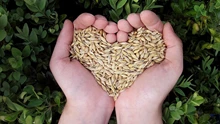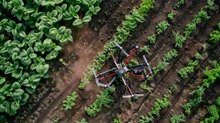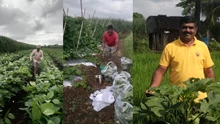
Pritam Singh, who farms on 110 acres, including some leased land, in Haryana's Panipat district, has just sold his harvest of Basmati rice varieties- PB 1121 and PB 1509 at the local mandi for Rs.3800 and Rs.3500 per quintal, respectively.
Both the varieties, established by the Indian Agricultural Research Institute (IARI), Pusa, Delhi, provide farmers like Singh with financial benefits ranging from Rs.25000 to Rs.30000 per acre, after deducting cultivation costs and leasing rental for the land.
"Since the introduction of high-yielding varieties such as PB1121 and PB1509 the production as well as quality in terms of size of the Basmati rice grain increased thus bringing economic benefits to us," Singh stated.
Prior to the introduction of these two varieties, Singh stated that conventional varieties had yields ranging from 12 to 13 quintal per acre, whereas the PB1121 and PB1509 varieties have average yields of 24 and 26 quintal per acre, respectively.
While the high-yielding and larger-grained PB1121 variety was certified as Basmati rice in 2008, the PB1509 variety, which matures in fewer weeks, was released in 2013.
Between 2010 and 2019, two Basmati rice varieties developed by IARI contributed 70% of the entire value of cumulative exports of long-grain aromatic rice from India worth Rs.2.38 lakh crore, benefiting farmers. During the specified period, India exported an average of 3.74 million tonne (mt) of Basmati rice annually, out of a total production of around 5mt.
According to an IARI analysis of the economic value of Basmati rice, the shipment of PB1121 and PB1509 rice varieties generated Rs.1.66 lakh crore in export earnings between 2010 and 2019, while domestic sales were Rs.51501 crore during the same period.
After deducting production costs, the IARI assessment demonstrates that Rs.1.34 lakh crore has been earned by an estimated 10 lakh farmers in Punjab, Haryana, Himachal Pradesh, Uttarakhand, sections of Uttar Pradesh, and Jammu and Kashmir who cultivate two varieties of aromatic and long grained rice.
"Improved Basmati varieties have brought wealth to millions of Basmati farmers by raising their standard of living, providing better education for children, and providing the finest health care for family members," IARI director Ashok Kumar Singh stated.
Basmati rice was grown in an average of 18.34 lakh hectares every year from 2010 to 2019, with PB11121 and PB1509 accounting for 67 % and 10% of the area, respectively. The rest of the varieties grown by farmers include PB1, PB6 and PB1718, which are also developed by IARI.
Saudi Arabia, Iran, Iraq, Yemen, and the UAE, as well as other European countries, are major export destinations for Indian Basmati rice.
In 2020-21, India exported Basmati rice worth Rs.29849 crore ($4018 million).
Recently, IARI has released improved varieties PB1847, PB1885 and PB1886; these are improved varieties with inbuilt resistance to bacterial blight and blast diseases. “These varieties would reduce the use of pesticides significantly in basmati cultivation,” Ranjith Kumar Ellur, scientist, rice section, division of genetics, IARI, said.












